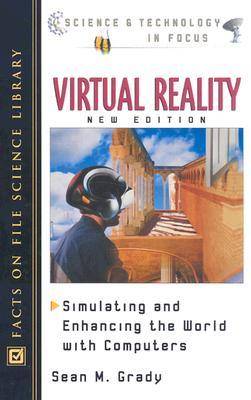Science & Technology in Focus
3 total works
The energy of light carries much of the world's information from one place to another. Surgeons, dentists, dermatologists, and other medical professionals use light in its various forms to heal or repair the body. Business and industry rely on optical scanners and ""electric eye"" detectors to monitor production quality, maintain security, and keep track of sales and inventory. Simple electric signs advertise products and services and high-tech bundles of hair-thin glass fibers send voices and data around the world. All this and more is done with the power of light. Optics is one of the fundamental disciplines that has driven the technological and communications revolutions of the 20th century, and it literally defines what the world looks like today. Optics, a new volume in the Science and Technology in Focus series, provides an overview of the theory of light as it stands today, in language that students will find both interesting and easy-to-follow. Covering the history of optics as a science and as a technology, as well as showing the ways in which light has been put to work as a tool, this book discusses three of the great triumphs of optical physics in the 20th century in detail - the creation of laser light; the development of fiber optics and optical-based communication; and the progression towards optical computing, which is seen by many computer experts as the next great phase in information technology.
Imagine visiting friends hundreds of miles away without having to leave your own home. Visualize touring structures or monuments that have yet to be built. What if surgeons could operate on patients that were in another country? Imagine if astronauts could walk on Mars without ever having to leave Earth! With the modern advances of computer technology and virtual reality, such fantasies are becoming realities. This completely revised and updated edition of Virtual Reality explores the development of this groundbreaking scientific field and its fascinating possibilities for life at home, at work, and during leisure hours. This book provides an overview of virtual reality's history, the tools and techniques used to mimic the physical world, the fields in which virtual reality is being used, and some of the obstacles that virtual reality's supporters have had to overcome. This new edition catches up with the developments that have taken place in the past five years, including problems that virtual reality businesses have encountered as a result of the technology boom-and-bust economic cycle that took place during the last few years of the twentieth century.
Some of the most significant and potentially devastating dangers to human and animal life come from sources we cannot see without the help of microscopes. Viruses, bacteria, and other microorganisms have been a troubling presence in the world probably from the time multicellular life first appeared. As part of the new Science and Technology in Focus series, Biohazards covers the history of how these extremely powerful microscopic invaders have plagued the human race and how humans have responded to these attacks. Comprehensive and up-to-date, this volume looks at the recent resurgence of diseases that were once thought vanished, such as tuberculosis and staphylococcus. It also explores the renewed threat of biological warfare in the form of bioterrorism following the attacks on the World Trade Center and the Pentagon on September 11, 2001. Using the most recent information available, Biohazards covers other important topics such as the recent anthrax scare, the ongoing battle against HIV/AIDS, and the recurring outbreaks of extremely deadly diseases such as Ebola.


